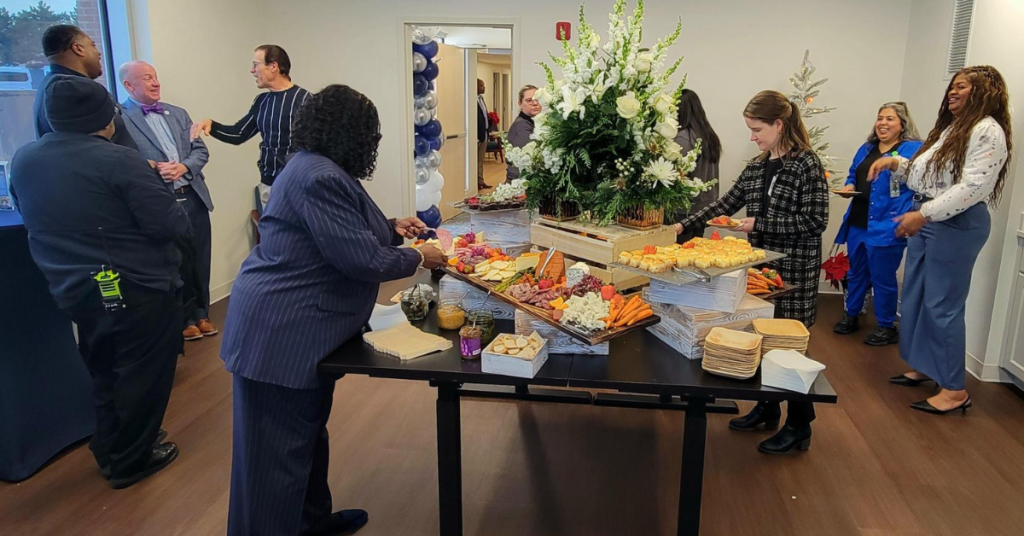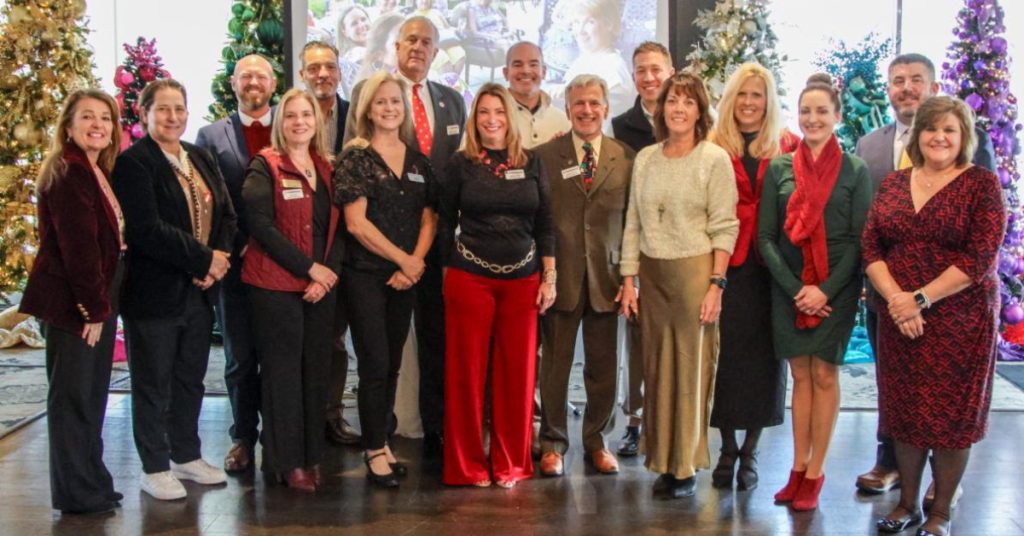A coalition of nearly 200 Indiana leaders released a new statewide education pathway Tuesday that seeks to create additional classroom and work-based learning opportunities, especially in the form of apprenticeships, for high school students.
Known as CEMETS iLab Indiana, the coalition said the strategic plan, detailed in a new report, is meant to address Indiana’s talent shortages by supplementing the traditional high school-to-college pathway. It ultimately will prepare students for in-demand careers while simultaneously developing a new talent pipeline for employers.
If the plan is implemented as expected — and supported by state education officials — the new pathway will welcome students in at least one occupation starting with the 2025-2026 school year.
“The iLab’s strategic plan is the culmination of eight years of research and learning. Hoosiers need more pathways to well-paying jobs, and we are excited to move forward with this broad and engaged coalition on clear next steps for building and scaling a system that could welcome students as soon as the 2025-2026 school year,” said Claire Fiddian-Green, co-chair of CEMETS iLab Indiana. She’s also the president and CEO of the Richard M. Fairbanks Foundation, which has so far provided more than $12 million in funding to support the creation of a statewide youth apprenticeship system.
The pathway announcement comes as Indiana’s top education officials are continuing to hash out a massive high school diploma redesign meant to maximize “flexibility” and allow students to personalize learning pathways and experiences, including with college courses taken while still in high school. Internships, apprenticeships, military experience and other work-based learning will also be allowed to count toward graduation requirements.
iLab Strategic Plan Full Report-1
iLab members said they’re monitoring the diploma changes and advocating for the number of days per week that students spend at employer sites to be aligned with new state requirements for high school schedules.
The proposed pathway combines classroom instruction with paid, on-the-job experience. Fiddian-Green and industry leaders said the program is expected to provide new opportunities to tens of thousands of Hoosier students, including those who otherwise may not have opted to attend college or pursue training after high school. The pathway will also enable students to transfer to the college pathway, if they choose to do so.
The iLab’s goal is that a statewide youth apprenticeship pathway will serve a cumulative total of 50,000 students by 2034. That equates to almost half of expected new job growth in the next decade.
If successful, that could make Indiana a “Top 10” destination for employers seeking to expand existing businesses and entrepreneurs working to launch new businesses, industry leaders said in Tuesday’s report.
“This new pathway is a win-win for students and employers. For employers, the pathway will bring in eager, motivated Hoosiers who can grow and innovate within our industries,” said David Becker, co-chair of the iLab Indiana and chairman and CEO of First Internet Bank. “For students, it’s an opportunity to gain hands-on experience, build valuable skills and start on their career path.”
Expanding apprenticeships and other training
Indiana’s first youth apprenticeship pilot program launched in 2019. Currently, there are seven sites operating youth apprenticeship programs and two more in the planning phase.
The program starts in 11th grade and requires 650 hours at the employer site, alongside traditional high school classes and dual credit courses. Successful participants receive a high school diploma and an industry credential.
Indiana now has more than 100 employers and 40 schools partnered to serve 450 students in youth apprenticeship programs in 13 counties, according to the iLab report.
But in the last five years, youth apprenticeship intermediaries and their employer and school partners have identified multiple “systems barriers.” iLab leaders noted:
- A lack of industry-created occupations, standards and curriculum that has impeded the ability for a large-scale apprenticeship program.
- Inflexible high school schedules, like high school diploma credit hour requirements that limit apprentices’ time outside of the school building.
- Too few transportation options, making it difficult for students to have consistent workplace schedules.
- A lack of “comprehensive, labor market-aligned career advising” for students. In addition, few counselors have access to real-time, statewide labor market projections, which makes it challenging for students to select the best education and training pathway for their desired career.
- No formally recognized credential that accounts for skills learned at the workplace. (Currently, an apprentice’s only option to earn a credential recognized by employers and the higher education system is to earn an associate degree or higher.)
- A “fragmented” work-based learning landscape involving multiple education, intermediary and government actors.
“Indiana simply isn’t meeting that demand,” iLab leaders said in Tuesday’s report, emphasizing that by 2031, 72% of jobs in the United States will require education or training beyond high school, but only 39% of Indiana adults 25 or older have an associate degree or higher. “We don’t have enough Hoosiers attending – and finishing – college, and we provide limited opportunities for those who don’t pursue a college degree. It’s time for another approach.”
To address those barriers, the Richard M. Fairbanks Foundation awarded a grant leading to the creation of Indiana’s iLab, which officially launched late last year.
Through the iLab, Hoosier industry leaders are looking to model Indiana’s statewide program after the renowned system in Switzerland, where apprenticeships start in high school.
Switzerland’s dual system combines learning on the job — and being paid a learning wage — with one to two days of theory at school. Nearly two-thirds of Swiss youth aged 16-18 participate in apprenticeships.
To maximize value for both the apprentice and employer, the iLab recommended students spend a minimum “of 50%, and ideally closer to 65%” of their time in workplace training and working time during the apprenticeship. Academic instruction, on the other hand, “should differ depending upon the occupation,” according to the report.
Health care apprentices should study subjects such as biology and anatomy, for example, while banking apprentices should study math and economics.
And due to the “rigorous design” of apprenticeships and the time required for on-the-job learning at the workplace, high school classroom time requirements “should decrease in recognition of competencies gained during apprenticeships that meet high school credit requirements,” per the iLab report. That should still allow time for apprentices to pursue extracurricular activities such as athletics, however.
A model for the future
iLab Indiana initially focused on five industries — banking, insurance, health care, life sciences, and advanced manufacturing — where there are “significant projected talent shortfalls and strong, existing executive-level support from Indiana employers for creating a professional pathway,” according to the coalition’s report.
Four additional industries have since emerged as priorities for the iLab in 2025: information technology (spanning all industries); construction; entertainment, sports and hospitality; and microelectronics.
The iLab coalition’s next steps are to identify priority occupations and recruit more employers before creating a statewide system that allows learners to move up or across college and professional career paths.
The plan also prioritizes the creation of a “labor market-aligned career advising system” starting in middle school.
“An employer-led professional and education pathway – where employers identify in-demand occupations within their industries and the related competencies, partner with educators to develop curricular content, and deliver on-the-job education and training – enables employers to play a leading role cultivating the talent needed to meet their evolving workforce needs,” the report said. “
Implementing this new pathway requires establishing a statewide system to ensure students in every community can access it, and that the competencies they gain result in a formal credential recognized by both employers and the higher education system. Together, the existing college pathway and new professional pathway can operate as part of a comprehensive education and training system that engages the vast majority of Indiana’s high school students.”
iLab members will work over the next year to further develop the plan, along with a governance structure for employment, education and government partners. Efforts are also underway to help educators “clarify their roles, both at the K-12 and higher education levels,” iLab leaders said.
By the end of 2026, employers should begin hiring students for new apprenticeship programs in high-need fields.
“We know that Indiana’s education system has, in recent years, been scrutinized and analyzed, tweaked and tinkered with, in countless ways. We understand that employers and educators often have different priorities in their work with youth. We acknowledge that change is not easy,” iLab representatives continued in the report. “But we also know that we cannot continue to do the same thing and expect to get different results. We believe we have aligned on a proposed system design that will move us toward a better future for our young people, employers, educators, and economy.”
This article originally was published Sept. 17 by the Indiana Capital Chronicle, which is part of States Newsroom, a nonprofit news network supported by grants and a coalition of donors as a 501c(3) public charity. Indiana Capital Chronicle maintains editorial independence. Follow Indiana Capital Chronicle on Facebook and X.




